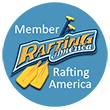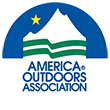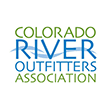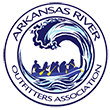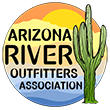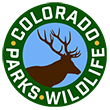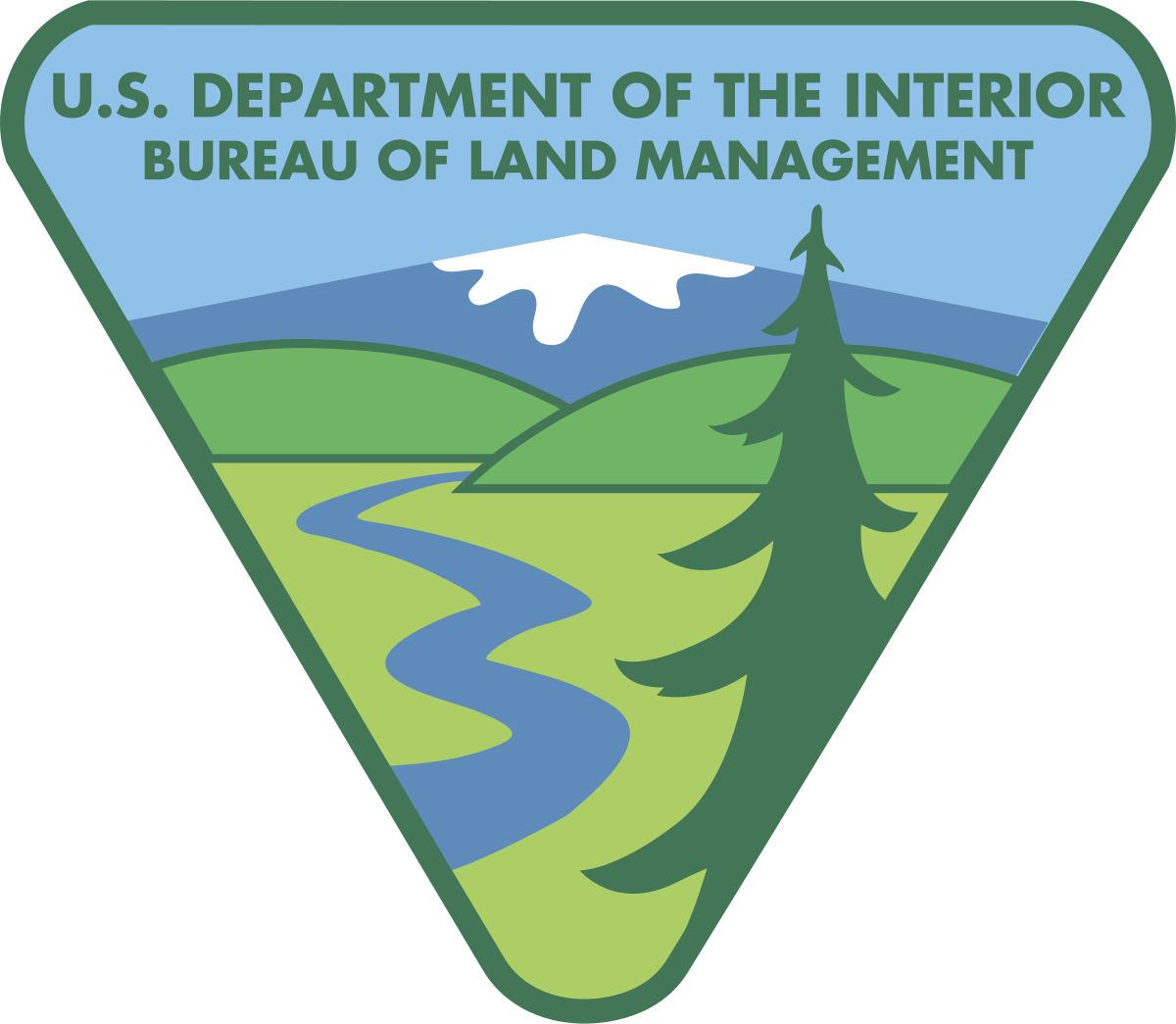All About Browns Canyon National Monument
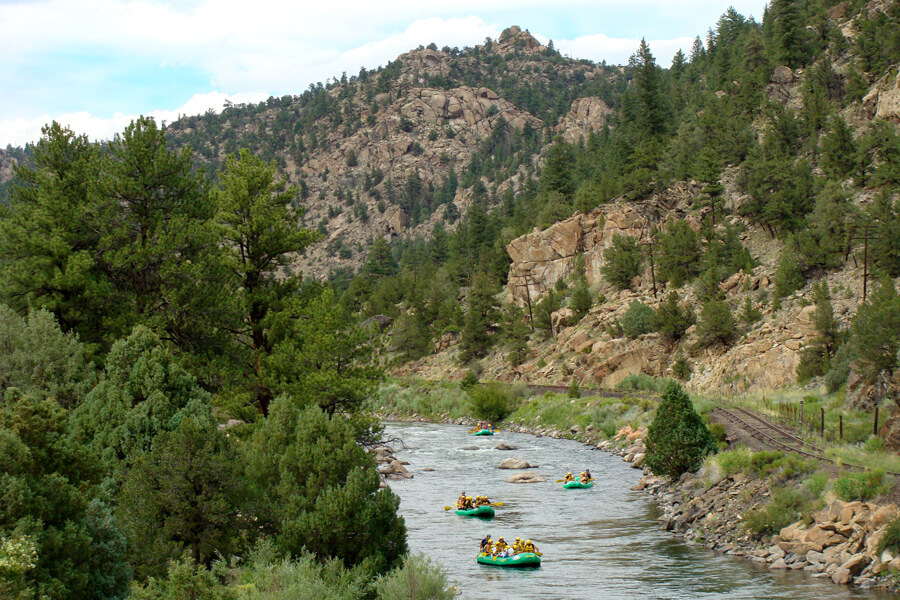
With an area of over 21,500 acres, Browns Canyon National Monument’s gorgeous granite cliffs and breathtaking views of the Sawatch Range of the Rocky Mountains are best admired in a raft! Before your trip, let’s take a moment to learn more about the special qualities that make Browns Canyon National Monument so unique. Wildlife Browns Canyon National Monument features a 3,000 foot range in elevation allowing it to support a wide variety of life. The granite cliffs provide sanctuary to many protected species including bighorn sheep, golden eagles, elk, falcons, black bears, and bobcats. Birdwatchers, take note, the area also serves as an essential migration corridor for migratory birds. During our spring and summer rafting season, the riparian habitat along the river comes alive with vibrant wildflowers blooming right along the Arkansas River. This river is home to world class fishing. In 2014, the Colorado Parks and Wildlife Commission designated the Arkansas River as Gold Medal Trout Water (learn more about this in our post “Arkansas River: Come for the Rafting, Stay for the Trout!”). History While you are enjoying your Arkansas River rafting adventure through Browns Canyon National Monument, you will notice railroad tracks hugging the river bank. These are from the mining days of the Upper Arkansas Valley dating back to the 1880’s. From 1880-1910 three railroads served the area transporting goods to support the mining, ranching, and farming industries. In the 1800’s, Leadville established itself as the most productive silver mining district in the state of Colorado. There also proved to be an abundance of gold, lead, copper and zinc in the area. Unfortunately the heavy mining caused a significant amount of pollution impacting the Arkansas River since its headwaters are located in Leadville. Thankfully today, the hard work of environmentalists and Chaffee County locals such as ourselves has lead to the clean up of Arkansas River. It is with great pride that we can now enjoy our whitewater rafting trips on beautiful clear waters. Geology Glacial runoffs are responsible for the unique formations and windy path of the Arkansas River. Over 70 million years ago while the glaciers melted, their initial runoffs caused a blockage of trees and stones preventing the water from flowing down the naturally occurring fall line. The water persevered and forced itself to carve through the granite creating Browns Canyon and feeding into the Arkansas River. When you are rafting through the Numbers you can see the distinct markings from the glaciers in the cliffs. The cliffs themselves are a mostly comprised of granite however, there are patches of igneous rock along the Browns Canyon (keep an eye out when you hit widow maker!). Whitewater Rafting + Other Fun With over 21,500 acres Browns Canyon National Monument boasts a lot of potential for all sorts of outdoor recreational activities. Our favorite is whitewater rafting – navigating along the Arkansas River through the granite canyon carved out eons ago presents such a unique perspective of the National Monument. We aren’t the only ones who feel this way – the Arkansas River is the most commercially rafted river in the entire United States. We offer white water rafting trips for all levels so first timers and diehard whitewater junkies alike will find something to smile about. If you want to extend your experience in Browns Canyon National Monument beyond whitewater rafting, Wilderness Aware conveniently serves as the Visitors Center meaning we have a variety of maps and other literature on the best ways to explore Browns Canyon National Monument. Check out Browns Canyon National Monument for yourself this summer by reserving your Colorado white water rafting trip online or giving us a call at 1-800-IN-A-RAFT!
FIBArk, America’s Oldest and Boldest Whitewater Festival!
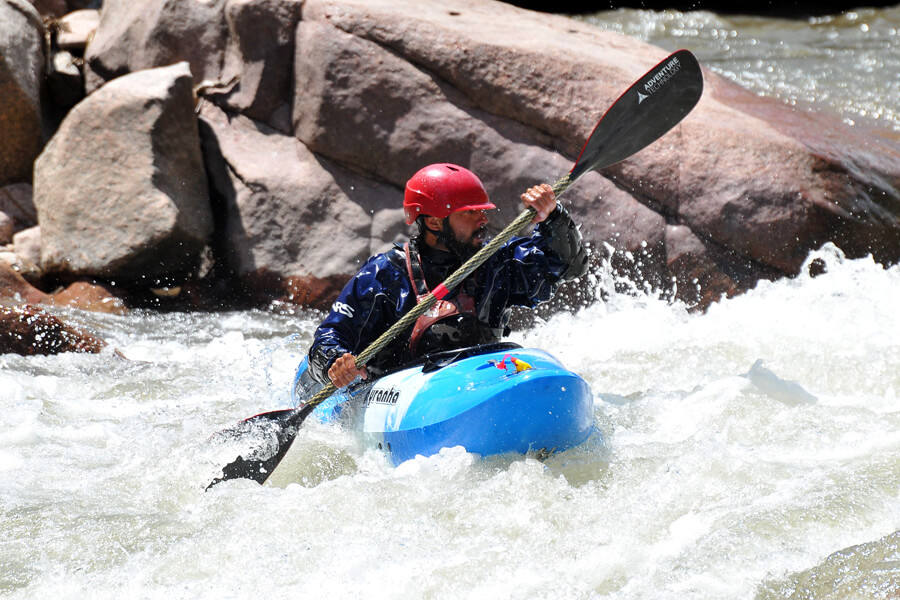
According to their website, “FIBArk aims to promote, preserve, protect, and enhance whitewater paddle sports in the greater Salida area through education, competition, and commemoration.” What does this actually involve? Glad you asked! FIBArk follows the fun of PaddleFest occurring the third weekend of June in Riverside Park, Salida – less than 30 minutes away from our Buena Vista headquarters. The event engulfs the town and attracts whitewater aficionados from all around the world. The first FIBArk festival occurred in 1949; the name itself is an acronym for “First in Boating The Arkansas”. There is endless entertainment at FIBArk, but the pinnacle event, the reason people travel from around the world to be there is for the whitewater boat races. Back in 1949 six brave crews paddled down the Arkansas in an attempt to take on 57 miles of river spanning from Salida to the other end of the Royal Gorge in Cañon City. Only two boaters completed the course. The next year, officials decided to shorten the course to 45 miles cutting out the gnarly Royal Gorge portion to end at Parkdale. This too was too ambitious, only one out of the 10 boaters made it to the end. Fortunately the old adage, “Third time’s the charm” proved itself true when the course was cut to 25.7 miles spanning from Salida to Cotopaxi. This eliminated the need for portages and ten out of the eleven boaters completed the course. Today, we still use these sections of the river for the race making it the longest whitewater race in the United States. In these early years, participants would use every conceivable vessel to float down the river: DIY converted airplane bellies, pontoons, and catamarans. These creative watercrafts eventually lead to one of the most fun events of FIBARK: The Hooligan Races. The rules for entering are extremely straightforward: “anything that floats that’s not a boat,” is fair game! While extremely entertaining both for spectators to watch and participants to navigate, these unorthodox vessels typically don’t fare so well in terms of taking on the rapids… The most successful in the early days of FIBArk were the sit-inside kayaks. Their maneuverability and lightweight made them ideal for navigating the rapids along the river. This opened the door for Slalom races. In the early 1950’s these races were gaining popularity throughout Europe, however they were nonexistent in the United States. FIBArk changed this thus becoming the birthplace of whitewater racing competitions. Boaters from around the world were invited to take on the challenging course where they were judged on their ability to clear gates. Point are docked for missing gates or hitting them and the racer who is able to make it through with the least amount of these errors and fastest time wins. Slalom racing is now an Olympic sport with many athletes training right here on the Arkansas River. Today, FIBArk is so much more than a series of races. The festival, while officially a three day affair, truly spans over the course of the week. There is a carnival, beer garden, live music spanning throughout the day and into the evening, a parade, seminars for new paddlers and those looking to improve their skills, and so much more! Book your Colorado white water rafting trip and make the most of your time in the Arkansas River Valley by checking out FIBArk this summer.
Why CFS Matters
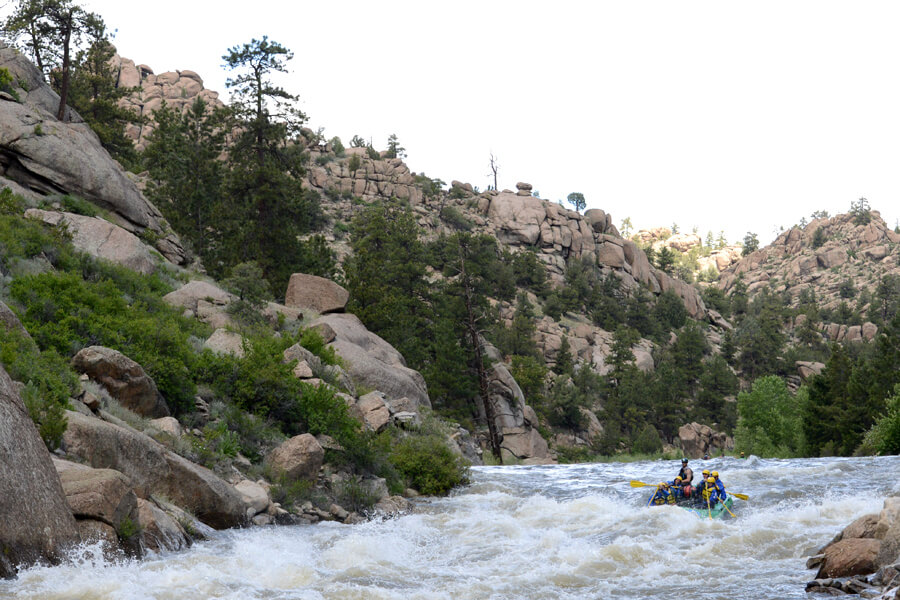
CFS or Cubic Feet per Second is the unit of measurement used for determining the “speed” of a river. Pay attention to this number when booking your trip as you soon will learn, water levels make a BIG difference on your whitewater rafting experience! When I first moved to Buena Vista, I noticed what seemed like an obsession with the mysterious acronym “CFS”. Any mention of my role at Wilderness Aware Rafting, and someone would immediately ask, “What’s the CFS like right now?”. Having never gone whitewater rafting before, “CFS” was a completely foreign term. A trip down one of our most advanced sections of whitewater rafting (The Numbers) on my second day in town, quickly taught me the importance of paying attention to CFS and where the local obsession with CFS levels came from! I like to think of CFS in as if it were a thermometer. Similar to how a humid 80˚ day is significantly different to a snowy 29˚ day, the range in numbers for CFS is just as impactful. A river during high CFS flows will feature larger rapids, bigger waves, and completely different terrain than from when CFS flows are low. Both conditions have their perks, depending on what you are hoping to get when booking your Colorado whitewater rafting trip! What to Expect During High CFS If the rivers are flowing above 2,000 CFS this is officially high water! Woohoo! High water conditions are my favorite time to go rafting. There is much more action and adrenaline charged waves and drops come with every turn of the river. Plan on getting soaked! The higher the CFS, the more advanced the trip, so first time rafters are advised to start with one of our Browns Canyon National Monument trips before taking on the Class V sections that require more technical paddling like The Numbers or Royal Gorge. When rivers are flowing at a faster rate, it is of upmost importance to listen and follow guide commands. Your guide is depending on guests to paddle with full force to compensate for the speed of the river. Higher flows mean less room for error since your guide will have much less time to readjust and maneuver the raft to avoid obstacles if the paddle crew is unable to follow the original route. Typically high CFS flows occur late June – early July when the majority of the snowpack is melting. What to Expect During Low CFS While I’m more of an adrenaline junkie, I certainly can appreciate the way my favorite butterfly inducing rapids mellow out during low CFS. A calmer river means more time to relax and enjoy the gorgeous scenery whitewater rafting immerses you in. For first time rafters who are a little nervous about what to expect, I suggest scheduling your trip during low water conditions. The slower pace takes the pressure off remembering whether or not to back-paddle when your guide calls for a left turn. There is more room for readjusting lines and less risk of flipping should you hit an obstacle. Families with small children or those who may not want to paddle have the option of zero paddling on trips as well since we are able to mount oars on our rafts for your guide to row instead. (It’s super easy to arrange, just ask!) If you’re hoping to take a lot of photos, I suggest going during low flows as well. There will be more opportunities since constant paddling is not as necessary as during high flows. Low flows kick off the season starting Memorial Day and last until about mid June, then pick up again mid July – August. Now that you have a better idea of what to expect, get out there! Call us at 1-800-In A RAFT (1-800-462-7238) or book your Colorado white water rafting adventure online.
Featured Trip: The Arkansas River Dinner Float
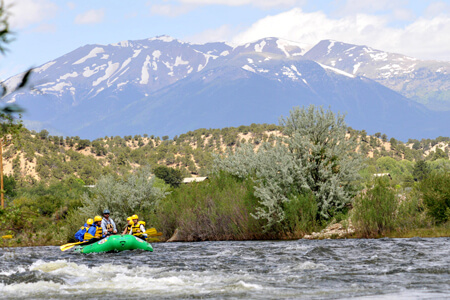
Looking to sneak in a little time on the Arkansas River that anyone from your preschooler to Grandma can enjoy? Check out our exclusive Arkansas River Dinner Float Trip. Known among River Rats as the Milk Run, our Arkansas River Dinner Float Trip takes you on a mellow easygoing portion of the river. Showcasing some of the best views of Mt. Princeton and Yale, this trip features Colorado mountain scenery at its finest. This 3.5 mile trip is perfect for wrapping up a summer day or easing into whitewater rafting if you are new to the scene. With its laid back pace compared to some of the other sections of the Arkansas River, the Milk Run is extremely beginner friendly or perfectly suited for those who would rather take in the scenery than charge through adrenaline-inducing rapids. We mount the boats with oars so guides take care of all the paddling and you can focus on enjoying. The trip wraps up at the Riverside Bar & Grill, home to the best fish tacos and margaritas in Buena Vista. Relax as you leisurely enjoy dinner and the beautiful Sawatch Mountain Range views. This trip is unlike any other and sure to be one of the more memorable dinners on your vacation.
Top Three Reasons to go Whitewater Rafting This Mother’s Day
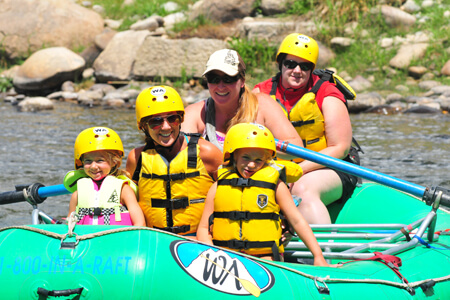
This Mother’s Day, treat Mom to some quality family time you are all sure to remember. Here are our top 3 reasons to go whitewater rafting this Mother’s Day! Top Three Reasons to go Whitewater Rafting This Mother’s Day 1. Quality Family Time Whitewater rafting requires your family to disconnect from everything else and focus on each other. The moment your green raft pushes off the shore, your world is transformed into an ecosphere consisting solely of t hat green raft and the destinations it leads you. Whether your family is admiring the gorgeous glow of sunset on the canyon walls or settling into your groove as your synch up and power through a wave train, rafting will engross you enabling the opportunity to connect without the distractions of any screens – every mom’s dream. The river makes an ideal setting for creating new memories to share and soaking in the breathtaking Colorado scenery. 2. Rejuvenating Mom will feel inspired after basking in the Colorado sunshine and completely disconnecting from the daily grind. Whether on one of our multi-day whitewater rafting trips or a half-day trip, spending time on the water will refresh the senses. The opportunity to connect with remote wilderness areas and take in natural landmarks like Browns Canyon National Monument brings a new perspective and appreciation for nature. 3. Fun! There is nothing quite like the endorphin rush from paddling through giant rapids or the build up of butterflies in your stomach followed by the thrill of plowing over a wave. Whitewater rafting is an absolute blast and our trips include a variety of options sure to please the class IV big water junkies and the more casual rafter in search of a sightseeing float. No matter the trip, time on the water is sure to put a smile on everyone’s face. Bonus: Mom will come away from the trip feeling empowered knowing she toughed it out on the river. And, if she’s still craving that spa experience, Buena Vista just so happens to boast some incredible natural hot springs!
Featured Stretch of River: Royal Gorge
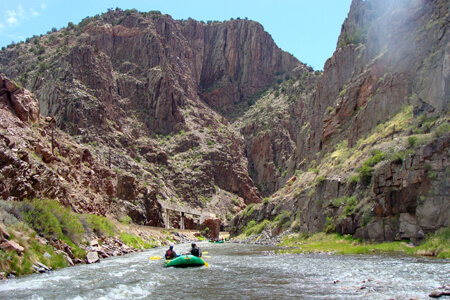
Ask our guides what their favorite stretch of Class V rafting is along the Arkansas River and chances are they’ll say the Royal Gorge. Known for its iconic history and fast flows, whitewater rafting through the Royal Gorge is a guaranteed fun time! Just an hour south of Colorado Springs you’ll find some the hottest action the Arkansas River has to offer. It’s a genuine toss up among whitewater aficionados over which section is better – The Royal Gorge or The Numbers. Personally, I find each one so unique that it’s impossible to decide. (If you’re finding yourself in a similar situation, check out our trip that features both: 2 Day Arkansas River Extreme) Our Royal Gorge trips start a bit differently than the other whitewater rafting trips we do on the Arkansas River. Rather than meeting in our Buena Vista office, you’ll meet up with your guides in nearby Cañon City. After gearing up, we put in just above the start of the Royal Gorge at Bighorn Sheep Canyon. The fun starts immediately with Sunshine Falls a splashy rapid requiring some technical paddling during high water conditions. Entering the Royal Gorge and looking up at the 1,250 foot granite cliffs showcases Colorado geology, history, and simply beauty at its finest. The layers of rock were carved away by the Arkansas River to create the Royal Gorge as we know it today over a period of 3 million years. A relic from Colorado’s Wild West Days, you’ll notice railroad tracks laid out in 1878. Originally built by the Denver and Rio Grande Railroad company after two years of guerilla warfare against Santa Fe Railroads, these tracks are still in use today by the Royal Gorge Route Railroad. As we continue on just past Wall Slammer, a class V that gives me butterflies everytime we pass through, the 955 foot high suspension bridge towers above us. Built in 1929, the bridge held the world record for highest bridge until 2001. Looking up at this moment is always my favorite – it’s such a unique perspective. Very few of the Royal Gorge’s annual 500,000 visitors get the opportunity to enjoy their experience via raft! My favorite time of year to raft the Royal Gorge is early summer (May/June) because of all the secret waterfalls that reveal themselves after spring rains. The juxtaposition of jagged granite cliffs and lush greenery surrounding the waterfalls is absolutely breathtaking. Mid June – July brings high water rafting season making the rapids even more intense and then in August, things mellow out again returning to early summer flows.Regardless of when you visit, the Royal Gorge is also a popular spot for spotting mountain goats and bighorn sheep. I’ve had the best luck spotting them after Lion’s Head Rapid. If you got a taste of the Arkansas River and are craving a new flavor, I highly suggest checking out the Royal Gorge. It has a very unique feel and is a personal favorite. Check out all of the options for our Royal Gorge rafting adventures here!
Colorado Adventures: How to Spot a Bald Eagle
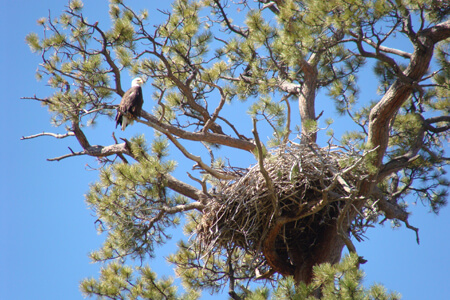
Spotting a bald eagle is one of the coolest things about an adventure on the river! We’re sharing what to look for – and some of the best ways to access Colorado’s bald eagle hotspots. Few things can replicate the majesty of a bald eagle in flight. Some travelers on river adventures are lucky enough to spot a bald eagle in its natural habitat – definitely the memory of a lifetime! With only 78,000 birds in the wild, bald eagles a rare sight; however, thanks to conservation efforts, they’re making a comeback throughout North America, so your chances to see one a better than ever these days. This is especially true here in Colorado.The state is part of a major bald eagle migratory route so if you go at the right time of year, you’ll have a great chance to see them in action. Whether you’re an avid birder or just want to catch a glimpse of America’s most iconic national symbol while you’re floating along on one of our trips, this article will teach you how to identify bald eagles, plus give you some tips on how to spot them. Know What to Look For: Appearance and Characteristics Everyone can picture what a bald eagle looks like: the large brown body, yellow beak, and signature ivory head and tail feathers. Surprisingly enough, the picture in your mind may not be that helpful when it comes to spotting them in the wild. Like many birds, bald eagles’ plumage changes as they age. When the birds are juveniles, they don’t even have the iconic “bald” white head; for their first year of life, a bald eagle’s head is brown. Bald eagles don’t develop the brown and white plumage they are so famous for until they’re actually four years old, but that doesn’t make seeing younger birds any less spectacular. At youth, bald eagles begin with dark brown bodies and heads. In their second year, the feathers over their belly lighten. In their third year, the belly begins to darken as the head lightens, getting it closer to the final appearance, which it develops by its fourth year. The feet and beak consistently transition from dark to bright yellow by the time the bird is four. Tail feathers, however, are not a great indication of a bald eagle. They tend to differ bird to bird, and can closely resemble those of other species of eagles. Studying a bird identification guide is a great way to prepare for your outing. If you can, memorize how the eagle looks at each stage of its development before you hit the water. This way, you’ll know the eagle right when you see it, rather than fumble with a bird guide and missing the sighting. Getting the Timing Right Regardless of what month you go, there are certain times of day when bald eagles are most active. Bald eagles are not out much in the middle of the day. For the best viewing opportunities, go early in the morning, or late in the afternoon. Don’t leave it too close to sunset though, because you’ll need good lighting to see the birds. Bald eagles are highly wary of humans, so you won’t be able to get very close. Spotting a Bald Eagle on a Colorado Whitewater Rafting Adventure A rafting adventure is a great way to get your adrenaline fix in while also getting a chance at spotting a bald eagle its natural habitat. Since bald eagles rely on fish for their main source of food, they tend to stick close to water sources. We offer a number of rafting trips that take you into the heart of Colorado wilderness – bald eagle’s prime territory. Our Arkansas River Dinner Float is a popular family choice, as it is easy rafting for all skill levels. The Arkansas River is frequented by bald eagles so you have a good chance of catching a glimpse. Plus, we set out right before the golden hour, which is prime time for bald eagles while still being light enough to see clearly. Or, if you’re interested in more of a thrill, consider one of our full day or multi-day excursions. The 3 Day Arkansas River trip, for example, takes you down 68 miles of beautiful river. The long trip and isolation from populous urban areas mean you’ll have plenty of chances to see the people-shy bald eagle. While you’re at camp, you’ll have a much better chance of seeing the eagles during their busy times: morning and late afternoon. Imagine being treated to the sight of a bald eagle swooping down on the water to catch a fish, roosting in the trees on the water’s edge, or soaring high overhead as you float down the beautiful rivers of Colorado. With a Colorado rafting adventure, this can be your reality! Not much of a water person? If want a way to see bald eagles without having to get in a boat – we also offer horseback riding trips. You’ll be riding through the eagle’s natural habitat, as we follow a trail along Chalk Creek. Another perk for bald eagle enthusiasts – some of our horseback riding trail packages are available throughout the winter. This means you could come explore Colorado when over 1,000 bald eagles visit for their annual migration, significantly raising your chances of a sighting. Preparing For Your Colorado Whitewater Rafting Adventure Now you know how to spot a bald eagle in the wild, as well as when and where to go. The rivers of Colorado – prime bald eagle habitat – are also sites of unspoiled natural beauty the whole family can appreciate. We would be happy to speak with you and give you tips on how to plan your trip. Our knowledgeable guides have the firsthand experience to ensure that your timing and choice of river will give you the best shot at seeing a bald eagle on your next adventure. Get on touch with us today to see how
Rafting in Colorado? The Complete Guide to Keeping Mosquitoes Off Your Back
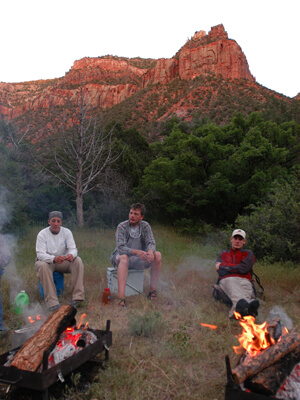
Whitewater rafting in Colorado is amazing, but you don’t want to return from your trip covered in bites. Don’t worry. This ultimate repellant guide has you covered! There are few experiences that offer the adventure, beauty, and excitement of Colorado whitewater rafting trip. There’s nothing like leaving civilization behind to immerse yourself in the powerful currents of Colorado’s famous rivers. A Colorado whitewater rafting trip has so much to enjoy! However, to make your excursion perfect, there’s just one thing to take care of: getting those darned skeeters off of you! Mosquito bites can put a damper on any occasion. Fortunately, this is an easy problem to deal with. To avoid coming home from your Colorado rafting adventure with your skin covered in bites, we present you with this complete guide to keeping mosquitoes off your back (and the rest of your body). Stay Away from Mosquito Hotspots Sometimes, the best way to win the war against mosquitoes is to choose your battles. This means avoiding areas prone to mosquitoes. By being around fewer mosquitoes, you naturally reduce the chances of being bitten. Thus, it’s important to understand where mosquitoes live. These obnoxious bugs breed in and around standing water. They love anywhere that’s damp and humid. Naturally, you won’t be staying dry when on a Colorado whitewater rafting trip. No need to worry though, our rivers flow fast enough to keep mosquitoes from settling. It’s the still water – the puddles and the ponds – that are dangerous. Unless you’re looking for a mosquito confrontation, you’ll do well staying away from still bodies of water. Set up camp somewhere dry. If the mosquitoes get in your tent, you’re done for! Avoid Peak Mosquito Hours Typically, mosquitoes are most active at dawn and dusk. These times are their peak feeding hours. If you’re out within this timeframe, you may be in for a bite! If you plan on taking a long hike, it’s best to begin before dawn or sunset. Maybe you’re more in the mood to sleep in and sneak in a short hike before hitting the water. If that’s the case, wait until early morning passes before going out. Just like with hiking, schedule your cooking and eating to avoid these peak hours so you don’t attract huge numbers of mosquitoes. Wear the Right Clothes Did you know mosquitoes have favorite colors? They’re most drawn towards dark colors like black, brown, gray, and blue. If you want to pass by mosquitoes unnoticed, simply opt for light colors. Long sleeves, long pants, and closed-toed shoes are your best friends when you’re passing through mosquito territory. You want to put as many layers as possible (or comfortable) between yourself and the little blood-suckers. There are even clothes you can buy that are treated with the repellent permethrin. While these don’t eliminate the need to apply repellent to your skin, they do serve as an additional deterrent. Choose the Right Mosquito Repellent There are many repellents out there, but the most well-known and time-proven is DEET. DEET was developed by the US Army in 1946 and is extremely powerful. The repelling effect lasts from ten to twelve hours, depending on the concentration in the product you choose. Combining a DEET-based repellent with permethrin-treated clothes will make you a walking anti-mosquito machine. Take note though as DEET can damage materials like spandex, vinyl, leather, and rubber. There’s no need to worry about what to wear – cotton, wool, and nylon are completely unaffected by DEET. Picaridin is another effective repellent. It was made in Europe in the late 1990s and has been in use in the US since the early 2000s. Picaridin’s effect lasts about eight hours. Unlike DEET, it doesn’t damage any fabrics or materials. Natural Repellents A lot of people like to avoid anything synthesized in a laboratory. If you prefer all-natural products, there are plenty of effective plant-based solutions you can use on your Colorado whitewater rafting trip. Lemon Eucalyptus Oil This is a trusted solution for keeping mosquitoes away. The Centers for Disease Control and Prevention has recognized lemon eucalyptus oil as being highly effective. You can easily make your own mixture at home. Just take one part lemon eucalyptus oil to ten parts sunflower oil and you’re good to go! Cinnamon Oil This little-known mosquito repellent is extremely powerful for warding off mosquitoes and even killing mosquito eggs. Be careful, though – concentrated cinnamon oil can irritate your skin. Prevent this by making a diluted solution: 1/4 teaspoon of cinnamon oil for every four ounces of water should take care of you. Soybean Oil There are many soybean based products on the market that provide long lasting protection from mosquitoes. These typically have a two-percent soybean content and can be found online or at natural food stores like The Lettuce Head here in Buena Vista. Don’t Forget About Protection While You Sleep It’s important to get the right bedtime anti-mosquito gear when you go rafting in Colorado. You’re most vulnerable when you’re asleep because you can’t defend yourself. If you’re extremely concerned, you can place a mesh net inside your tent to keep mosquitoes away. Keep flashlights off when you’re opening up your tent at night since mosquitoes are attracted to light. You don’t want to tip them off about the entrance to your safe zone! When it comes to snacks you may have brought, be sure to store all food and drinks in airtight containers away from your tent. The presence of food is sure to bring mosquitoes knocking at your door. Leave Your Perfume at Home! Keep in mind that mosquitoes follow strong scents. When they smell perfume, deodorant, or even aromatic lotions, they hone in for the kill. Safe yourself the hassle and don’t even make this one an issue. The easiest way to avoid mosquito bites, is to ditch the perfume or cologne and get in touch with your more wild side while on your Colorado rafting trip. (P.S. Here’s what to pack
Arkansas River: Come for the Rafting, Stay for the Trout!
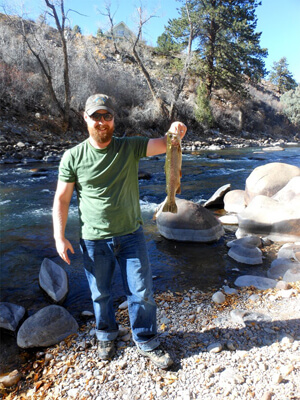
We all know of the Arkansas River as the Mecca of whitewater rafting, but did you know it boasts another accolade? Anglers rejoice – the 102 mile stretch of river starting near Leadville to the Royal Gorge in Cañon City is Gold Medal Trout Water. What is Gold Medal Trout Water? Designated by the Colorado Parks and Wildlife Commission, Gold Medal Trout Water must be publicly accessible and produce at least 12 “quality” trout (14+ inches) in addition to 60 pounds of standing stock per acre. Offering just over 100 miles of some of the best fishing conditions, the Arkansas River is the longest stretch of Gold Medal water in the state of Colorado. Unlike other iconic fishing rivers in Colorado, the Arkansas only recently earned its place in the Gold Medal club. Leadville’s early mining days took their toll on the Arkansas River contributing towards decades of damage. The designation as one of the best rivers for trophy trout fishing is the reward for years of combined effort on the behalf of state and federal agencies, volunteers, and the Arkansas River Valley community. As little as 20 years ago trout in the area experienced a limited lifespan of only 3 years due to the heavy metal contaminants from mining. Today’s trout thrive living beyond an age of 10 years and growing to a much larger, healthier size. In addition to reviving the fishing scene, the conservation efforts have even further preserved the beauty found along the Arkansas River. These stretches of river are best appreciated while in a raft. Areas like Browns Canyon National Monument and the iconic Royal Gorge encompass this portion of the Arkansas River conveniently creating the ultimate combination: America’s finest fishing and adrenaline inducing class III-IV whitewater rafting. While you aren’t able to fish off of our rafts (a special permit is required) our guides are happy to eddy out to those secret spots accessible only by raft. If you want to make the most of fishing opportunities, I invite you to look into our multiday trips. Since we camp right along the river, these trips allow anglers to take advantage of peak biting hours: dawn and dusk. The Arkansas River has always held the spotlight as a white water rafting destination, but it is home to so much more. Gold Medal Trout Water brings fishing galore (both brownies and rainbow) to our favorite whitewater destinations giving even more opportunities for fun this summer.
Featured Post: Upper Colorado River
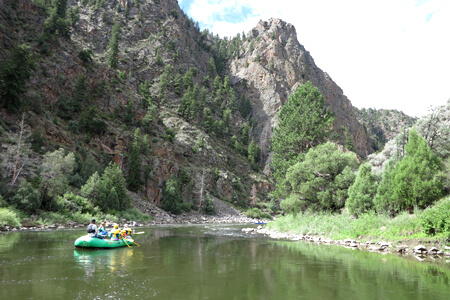
Lusting for some whitewater fun, but feeling a little intimidated by the class III-V rapids found on our Arkansas River options? No worries – our Upper Colorado River trips are the perfect solution! Featuring a handful of splashy class II rapids, unique pit stops for historical and natural landmarks, and an endless supply of gorgeous scenery, Little Gore Canyon along the Upper Colorado River is a family favorite. Just an hour’s drive south from Rocky Mountain National Park, this trip is a great option to tack onto your Colorado vacation adventure. What makes the Upper Colorado River so great? Family Friendly The Upper Colorado’s Little Gore Canyon is known among river rats for beginner-friendly, easy paddling. If you’re looking for a whitewater rafting adventure to accommodate both your 4 year old and Grandma, search no more – you found your trip. Little Gore Canyon provides the perfect balance of beautiful Colorado country scenery and fun class II rapids like “Eye of the Needle” and “Yarmony”. We offer a single day trip and a two day camping + rafting option. Since this stretch of water is so easygoing, we bring along inflatable kayaks (affectionately known as “duckies”) and invite guests to cruise independently alongside the raft. This is a unique experience from our other advanced whitewater trips and lets guests take full control of their adventure. If you’d rather chill and take in the sightseeing, that works too. Whatever the mood, the versatility of our Upper Colorado rafting trips can cater towards your preferences ensuring the experience of a lifetime. Location The Upper Colorado River is considered an “away river” for us, meaning we meet y’all at the put in with rafts, rental gear, and everything else rather than you coming to our headquarters in Buena Vista. If you’re in the Northern half of Colorado and want to go rafting, this trip is a very convenient option. Unique Features Our seasoned guides know the secret spots to eddy out and take in all of the resources along this section of the Colorado River. For example, you can pamper those paddling muscles with a soak in natural hot springs found alongside the river. Not too far from our put in, is an abandoned mining cabin. This well preserved historical landmark is a fascinating peek into Colorado’s early days and can only be accessed via raft. Another favorite pit stop is to view petrified dinosaur footprints. The short hike to this site provides a nice little break to stretch your legs and is very popular with kids. Wildlife + Scenery If you’ve been on one of our Browns Canyon National Monument or Royal Gorge whitewater rafting trips you’ll notice a big difference in terms of “paddler engagement” with this river. In other words, there is plenty of mellow downtime between rapids for appreciating the wildlife and scenery on the Upper Colorado River. This is perfect because Little Gore Canyon is a bald eagle hot spot – they love building their nests here. The dramatic canyon cliffs contrast with lush rolling hills and rural ranches providing an ample taste of Colorado’s natural beauty. If you’re on the hunt for a family friendly trip with a sprinkle of whitewater rapids to keep the adrenaline flowing and some bonus detours, look no further! Little Gore Canyon on the Upper Colorado River is calling your name – give us a ring at 1 800-IN-A RAFT (1-800-462-7238) or book here (link to trips) and make it happen!
